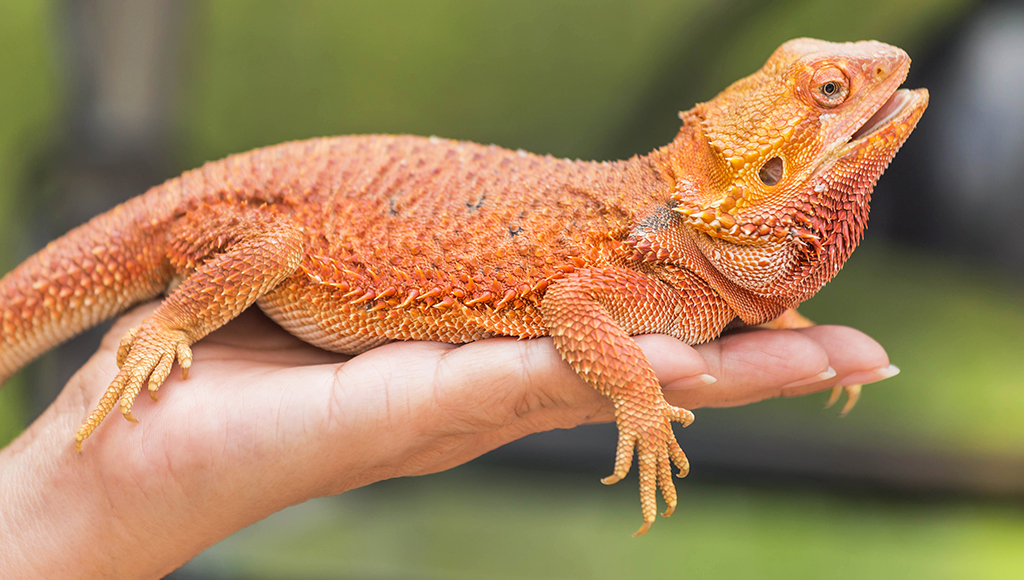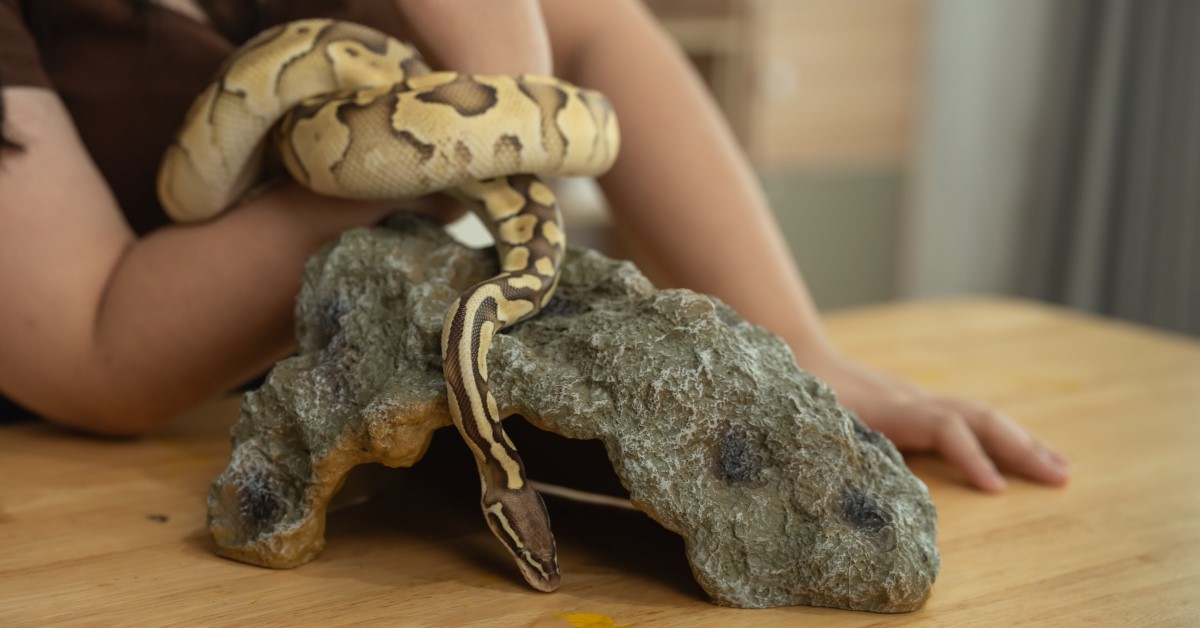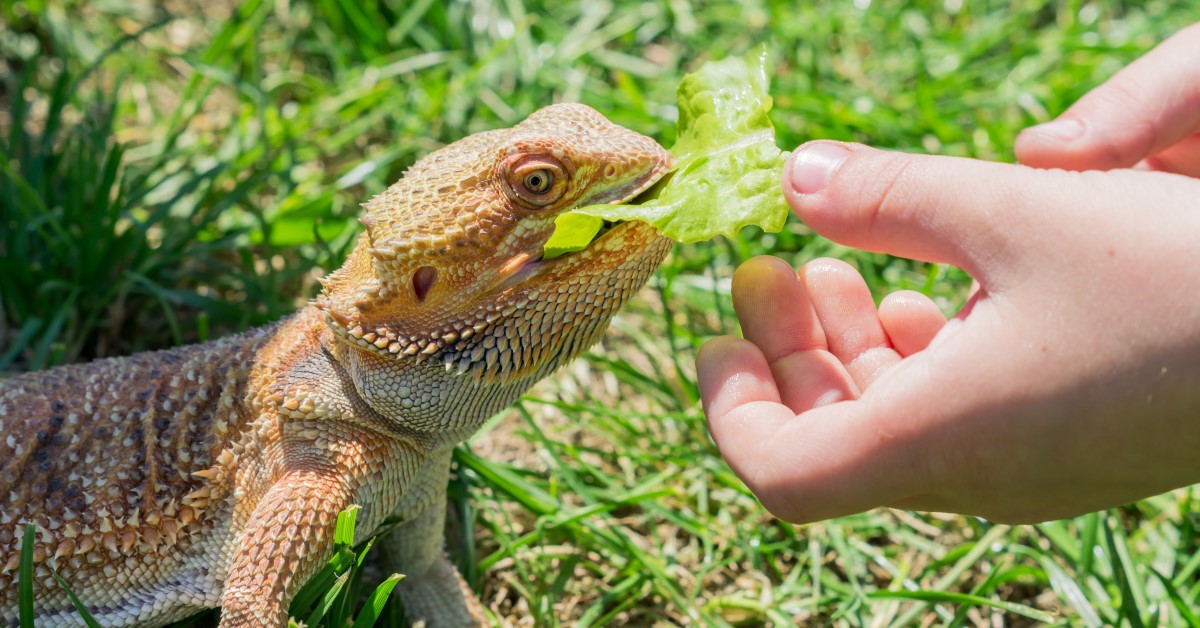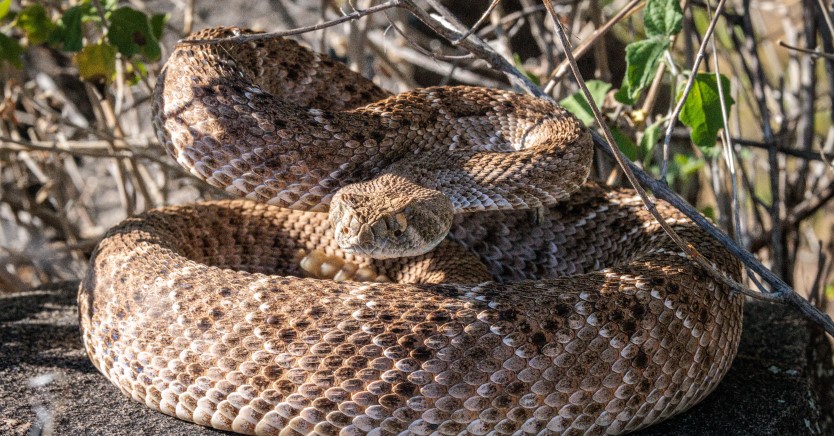There's a Dragon in Your House!
All ages will enjoy watching these fun creatures.

Bearded dragons make a great pet. They don’t get too large, eat a wide variety of foods, are active during the day, and are gentle animals. Bearded dragons are captive bred, have limited care requirements, and are inexpensive and readily available. These fascinating creatures are fun to watch and they are enjoyed by pet lovers of all ages.
What do I need for my pet bearded dragon?
If you've decided to have a bearded dragon as a pet, you will want to make sure you have everything you need to give it the proper care and a healthy environment in which to thrive. It's best to have everything you need before you bring your new pet home. Below is a list of the items you will need:
- A large, sturdy aquarium or terrarium with a screened top. Get as big a cage as possible, as these lizards can grow between 18 - 24 inches in length from head to tail.
- A combination light fixture that supports both fluorescent and incandescent lights.
- A UVB fluorescent bulb. A good choice is the ZooMed Reptisun 5.0 fluorescent bulb.
- A daylight bulb or heat emitter.
- An under tank heat pad.
- Substrate for the bottom of the tank.
- A hiding area for your bearded dragon.
- Rocks, branches, or logs for climbing and basking.
- Food bowl, smooth insect bowl, and a water dish.
- Any additional decorations, backgrounds, or artificial plants to make the habitat look more natural.
- Insects, Vegetables & Supplements
- Crickets, mealworms or super worms that have been gut loaded.
- Frozen mixed vegetables: beans, carrots, peas.
- Fresh vegetables: carrots, mustard, collared, dandelion greens, or kale.
- Calcium & vitamin D3 supplement powder.
Feeding
Bearded dragons are omnivorous. They will eat both insects and vegetables. Adult dragons will also eat pinky mice, baby lizards and anything else they find tasty. They tend to do best on a varied diet based primarily of vegetables.
Vegetables
Bearded dragons will need their greens chopped up. The smaller the reptile the more finely chopped the food will need to be. A good mix of vegetables for these lizards are raw shredded carrots, collard greens, dandelion greens, mustard greens, kale, and frozen vegetables like carrots, peas, and beans. You should avoid spinach and broccoli because too much can be harmful. Bearded dragons also like green leaf and romaine lettuce but these should be used sparingly due to the limited nutritional value. Vegetables should be fed to your animal daily. All these foods are easily attained in the produce section of your local grocery store.
Insects
Common insects available for reptiles are crickets, mealworms, super worms, and wax worms. Bearded dragons will usually eat all types of insects. The insects should be gut loaded before feeding them to your pet lizard. Gut loading is just feeding them a nutritious meal before giving them to your bearded dragon. This way they pass along the nutrients to your lizard. There are many commercially available cricket and insect diets for gut loading. Insects should be a part of your bearded dragon’s diet every other day.
Dietary supplements
Your pet bearded dragon will need a calcium and vitamin D3 supplement. If your lizard is lacking D3 and calcium it can get metabolic bone disease which can be fatal. The supplement will come in a powder form which you can sprinkle on the vegetables or coat the insects. The easiest way to coat insects is to place them in a bag or cup and shake them around. You should add the supplement to your adult bearded dragon’s diet about once a week. Breeding females, babies, and juveniles will need them more often.
Housing
A bearded dragon will need space. The bare minimum size is 36″ x 12″ x 18″ for one lizard. Bigger is always better and much bigger is essential if you house more than one dragon in a cage. An aquarium or a terrarium fitted with a screened top can make a nice home for your pet. Height is also important because bearded dragons like to climb and sit on top of logs and branches.
Lights and heat
Your pet lizard will require some special lighting. You will need to supply a UVB fluorescent bulb which is necessary for the metabolism of vitamin D3. The bearded dragon will also need a reptile daylight bulb or heat emitter. A combination light fixture that supports both fluorescent and incandescent light fixtures is required. Under-tank heating will come from a heat pad attached to the bottom of the tank. You should not use heat rocks because they can potentially form hot spots that could burn your reptile. If you see your dragon gaping (sitting with its mouth open) it is too hot. Turn off some of the lights, mist it with water, and if necessary remove it from the cage for a while.
Habitat and decor
The substrate for the cage can be paper towels, aquarium gravel, commercial calcium sand, pebbles, reptile carpet, or play sand. Play sand is an inexpensive, natural-looking substrate good for all but baby bearded dragons. Your pet lizard will also need a food bowl, smooth insect bowl (for mealworms, etc), and water dish. Dragons need a hide area like a cave or log. There are many natural-looking commercial shelters available. Sturdy branches, logs or rock formations are needed to keep your pet happy because bearded dragons like to climb and bask up high. You just have to make sure that the climbing areas are secure and won’t fall and hurt your dragon. You can add artificial plants and decorations to your animals home as needed to create a more scenic habitat.
Cleaning the habitat
Bearded dragons eat a lot and in return create a lot of waste. The lizard droppings and leftover vegetables must be cleaned daily. The water bowl, food bowl, and substrate must be checked for fouling and cleaned. The easiest way to clean the substrate is to use an aquarium fish net to scoop out the waste. The cage decorations, decor, and glass should also be cleaned periodically.
Ready to start saving money on pet wellness care?
Then take a look at Mint Wellness, the pet wellness plan that provides fast reimbursement on routine pet care. Save on vaccinations, wellness exams, preventatives, dental, and more!
Learn More


